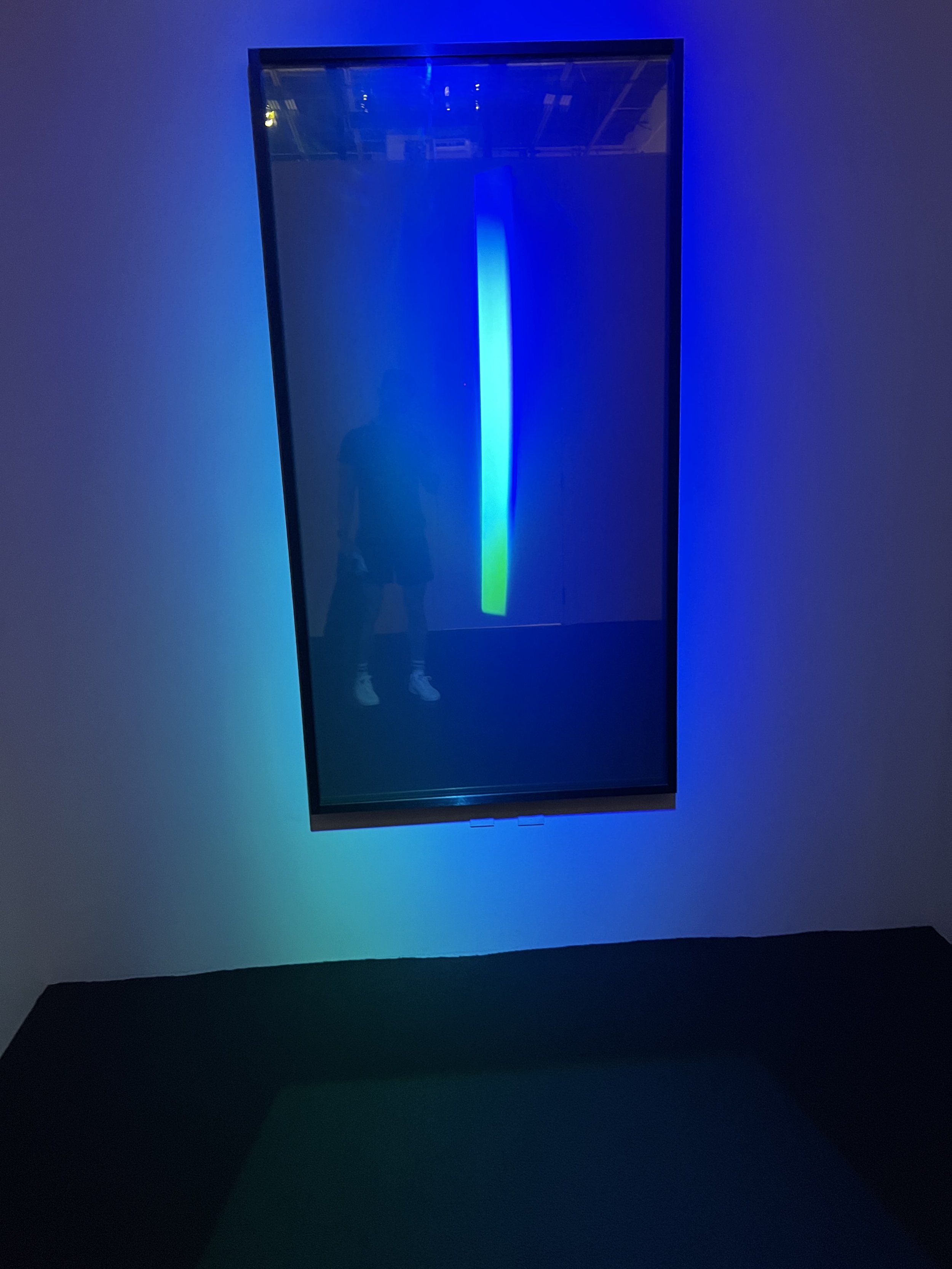W1 - Superblue and Moodboard
Pinterest Board
Please find my mood board here.
Superblue
I was in Miami weeks ago for vacation, and my designer friend invited me to the Superblue. I heard they had a great collection of artists and studios I admire. I was particularly excited for James Turrell and Es Devlin.
It was like a warehouse from the outside. As soon as I entered the building, my eyes adjusted to the dim environment with blue accent lightings. After checking in at the front desk, I immediately saw the classic TeamLab sunflower projections. The entire wall in front of me was covered by the animated flowers projected by five projectors mounted on the ceiling. They were perfectly stitched together, creating a seamless canvas. The work was interactive. Flower peddles dropped and faded away as people approached the wall and touched the flowers.
Around the corner, there was the main room—an irregularly shaped room covered by the same seamless projects from the wall to the floor. One side of the room and columns in the middle was covered with mirrors, expanding the room twice as large visually. Three loops were rotating in that room: flowers, sunflowers, and waterfalls. Each loop started and ended in the mix with each other, so there is no definitive beginning and end of each circle. All of them are responsive to people's existence and interactions. Flowers would burst into pieces and flow away when you touch them. Streams from the waterfalls would flow around you like you were blocking the water flow. The waterfalls react to the features of the room as well. There were splashes on the edges of walls and columns, making them more realistic.
The room was packed with equipment to achieve such a stunning project. The ceiling was a sea of projectors pointing to the walls and floors. I know TeamLab has a very close relationship with Epson. I toured TeamLab Shanghai with a team from Epson last summer. They introduced the 3LCD technology in their projects. In the corners of the room, I could find radars mounted on the wall detecting touches and the existence of people so that those animations can react accordingly.
This piece from TeamLab recreated an imaginary nature to show how easily human interference can interrupt nature. They want to increase awareness of protecting wildlife when people interact with their work. This is a very mature and beautiful work that runs so smoothly. I was immersed in the artwork that I didn't feel the existence of any technology. Even I could see projectors.
I had to walk back to where I ented to leave the TeamLab room to get to James Turrell's room. DRIFT Studio had their Meadow on display on the way there in the hallway. They were umbrella-like flowers made with motor, metal, and mesh fabric. They opened and closed like umbrellas. When the structures opened, the artists folded the material to look like flower blossoms.
At James Turrell's room entrance, three mirrors were lit up by three colored spotlights. They looked like ordinary mirrors from the side. However, as I slowly walked forward, I saw shapes in mirrors, and they were moving and evolving as I walked. I walked back and forth, trying to figure out how they were made. I am guessing they were "engraved" into the surface with lasers, just like the back of CDs.
Walking past the mirrors, I was asked to put on shoe covers. There was a waiting room playing a short documentary about Turrell's work. When it was our turn to enter the room, the staff gave us very lengthy and strict rules on what not to do in the room. For example, we were not allowed to take any photos and could not touch any walls. We also cannot pass the staff after entering the room. I understood the artist had specific ways he wanted his audience to follow. But I felt very uncomfortable and constrained after being given such strict instructions.
There is a room inside the room. You will walk up short stairs to get into the smaller room. Everything was white but lit up colored lights. The entrance side of the smaller room was a rectangle, but the other side of the room was a rounded corner rectangle. The source of lights was not visible to us. The colors of the room and the rounded corner rectangle changed slowly. As color changed, I felt the end of the room was expanding and shrinking. My friend and I discussed what was happening behind at the end of the room. We thought there was a giant white screen, and there were lights behind the screen, creating the illusion. However, as I carefully approached the front of the room. I realized it was an empty cut-out. Lights were coming from the edge hiding all the light sources.
This experience was so simple because it was just changing the light colors. But I was impressed how playing with color contrast can give me illusions of expansion of the room.



